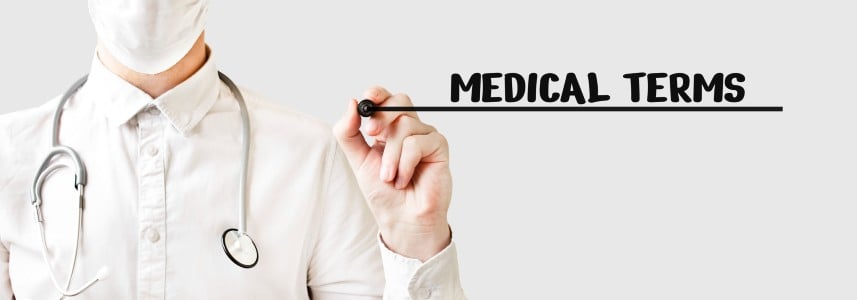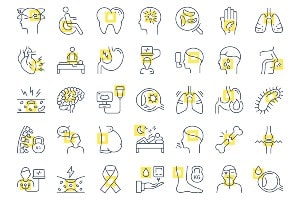About Acute and Chronic Bursitis

Learn about the disease, illness and/or condition Acute and Chronic Bursitis including: symptoms, causes, treatments, contraindications and conditions at ClusterMed.info.
Acute and Chronic Bursitis

| Acute and Chronic Bursitis |
|---|
Acute and Chronic Bursitis InformationBursitis factsA bursa is a fluid-filled sac that cushions an area of friction between tissues, such as tendon and bone. Bursae reduce friction between moving parts of the body, such as around the joints of the shoulder, elbow, hip, knee, and adjacent to the Achilles tendon in the heel. The number varies, but most people have about 160 bursae throughout the body. Bursae are lined with special cells, called synovial cells, which secrete a fluid rich in collagen and proteins. This synovial fluid acts as a lubricant when parts of the body move. Inflammation of a bursa is referred to as bursitis. Bursitis picturesMedia file 1: Acute infectious bursitis (septic bursitis) of the elbow. Courtesy of Christopher Kabrhel, MD. Media type: Photo Media file 2: Infectious bursitis (septic bursitis) of the elbow. Courtesy of Christopher Kabrhel, MD. Media type: Photo Media file 3: Infectious bursitis. Note the swelling at the elbow and redness of the skin. Courtesy of Christopher Kabrhel, MD. Media type: Photo Are there bursitis home remedies?The treatment for bursitis can be remembered with the following memory device: P-R-I-C-E-M.
How often is follow-up needed after treatment of bursitis?After you leave the doctor's office, try to change whatever caused the bursitis in the first place. Wear different shoes. Use kneepads when kneeling for activities or work. Rest the area and apply ice at least twice a day, keeping the area elevated when possible.Schedule a follow-up visit with your doctor in one week. If your bursitis is infectious, a follow-up visit in three to four days is appropriate for reevaluation and possible fluid removal. Is there a way to prevent bursitis?If a certain activity causes you to develop bursitis, then limit that activity or use protective measures. Use kneepads or cushioning for gardening and scrubbing floors. Workers such as plumbers, roofers, and carpet layers should wear knee protection. Choose more appropriate shoes or cushion the ankles with pads. You can improve your flexibility and strengthen muscles involved in joint motion through rehabilitative exercise.Be concerned about muscle tone if you have bursitis that tends to return. A physical rehabilitation program can guide you in the proper exercises to strengthen weak muscles. What are bursitis risk factors?Risk factors for bursitis include repetitive activities, gout, pseudogout, rheumatoid arthritis, trauma, and skin infections. What are bursitis symptoms and signs?Bursitis causes pain and tenderness around the affected bone or tendon. The bursae sacs may swell, often making movement difficult. The most commonly affected joints are the shoulder, elbow, knee, and foot. Shoulder In the shoulder, the subacromial bursa (subdeltoid bursa) separates the supraspinatus tendon from the overlying bone and deltoid muscle. Inflammation of this bursa is usually a result of injury to surrounding structures, most commonly the rotator cuff. This limits the range of motion of the shoulder resulting in an "impingement syndrome." The condition causes pain in the side or front of the shoulder.
What are bursitis treatments?The doctor will probably recommend home care with P-R-I-C-E-M: protection, rest, ice, compression, elevation, and medications (discussed below). What are causes of bursitis?The most common causes of bursitis are repetitive motions (for example, repeated throwing of a ball), trauma (extensive kneeling or hitting your knee on a table), infection, and preexisting rheumatoid conditions.TraumaTrauma causes inflammatory bursitis from repetitive injury or direct impact.
What exams do health-care professionals use to diagnose bursitis?
What is the medical treatment for bursitis?If your bursitis is not infectious, the doctor may inject the bursa with a corticosteroid to reduce inflammation. If your bursitis is infectious, the bursa will be drained with a needle. The doctor will prescribe antibiotics to be taken in pill form. If the infection is very serious, does not respond to oral antibiotics, or if your immune system is weakened for another reason, you may be admitted to the hospital for IV antibiotics. Most causes of infectious bursitis, however, can be managed safely at home. Occasionally, a surgical operation to remove the bursa can be required. What is the prognosis for bursitis?Most people respond to therapy in three to four days and can follow up with their doctor in a week. If the bursitis is infectious, however, the area may have to be drained with a needle every three to five days until the infectious fluid does not return. What specialists diagnose and treat bursitis?Bursitis is treated by primary-care physicians, including family medicine doctors, general practitioners, and internists, as well as orthopedists, physiatrists, and rheumatologists. When should someone seek medical care for bursitis?Because bursitis can be infectious and needs to be treated with antibiotics, it is best to see a doctor the first time you recognize symptoms. If the pain is not getting better with home care, your doctor may be able to offer some alternatives such as a cortisone injection. Fever is a definite sign to seek immediate medical care because it may signify infection. Heed other warning signs of infection such as constant warmth or redness around the joint or severe tenderness. Skin infections around the area (cellulitis) may mean that the bursa is infected as well. |
More Diseases
A | B | C | D | E | F | G | H | I | J | K | L | M | N | O | P | Q | R | S | T | U | V | W | X | Y | Z
Diseases & Illnesses Definitions Of The Day
- Noncancerous Colloid Thyroid Nodule (Thyroid Nodules) ‐ How are thyroid nodules diagnosed?, Introduction to thyroid nodules …
- Skin, Laser Resurfacing (Laser Resurfacing) ‐ CO2 Laser Resurfacing, Complications of Laser Skin Resurfacing …
- Malignant Fibrous Histiocytoma (Bone Cancer Overview) ‐ Are there any treatments or medications that relieve bone cancer pain? …
- Double Vision ‐ Is it possible to prevent double vision?, What are the symptoms and signs of double vision? …
- Ageusia (Taste Disorders) ‐ Are taste disorders serious?, Can taste disorders be treated? …
- Autism Screening and Diagnosis ‐
- Alpha-fetoprotein Blood Test ‐ In which situations are high blood (serum) levels of AFP used as a tumor marker? …
- Polymyalgia Rheumatica ‐ How do health care professionals make a diagnosis of polymyalgia rheumatica? …
- Stump Appendicitis (Appendicitis) ‐ Appendicitis definition and facts, Are there long-term consequences of appendectomy? …
- Gonorrhea (Gonorrhea In Women) ‐ Gonorrhea facts, How is gonorrhea diagnosed?, What are sexually transmitted diseases (STDs)? …